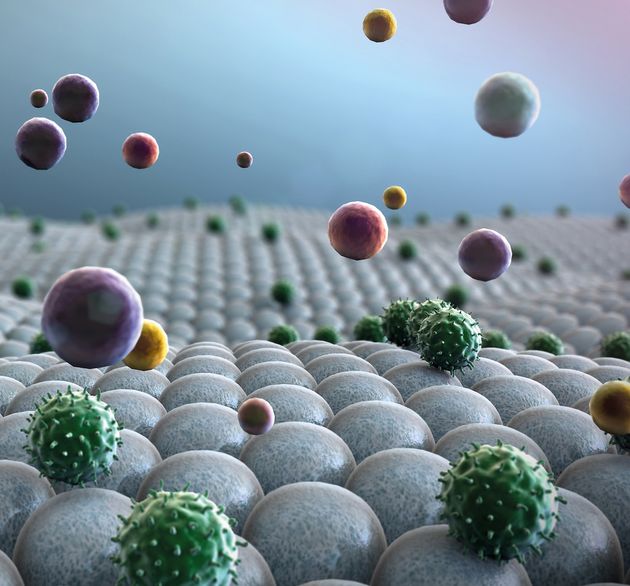Factors Influencing the Stability of the QCM-D Baseline
Baseline stability is very important for obtaining high-quality and reproducible QCM-D data and measuring them with high-sensitivity. Here are some factors that will help you optimize baseline stability in your QCM-D measurements.
Bubble formation during measurement
Gas bubbles may form on the surface of the sensor when using a liquid that has not been properly degassed. Such bubbles will have an influence both on frequency and on dissipation.
E.g., gas solubility in water decreases with rising temperature. When working at a sensor temperature above room temperature and water-based buffer is introduced into the measuring chamber, then there is a risk of bubble formation. Note that the risk of bubble formation generally increases as the salt concentration of an aqueous solution decreases.
Solution: Use degassed liquids only or make sure that the gas solubility of the liquid is not reduced during measurement.
Temperature variations
a) Measurement with oscillating quartz crystal microbalances is very sensitive to temperature variations. The QSense measuring chambers have a very good temperature stabilization, but large temperature variations in the environment or in the sample solution may not be fully compensated. A change in temperature will change viscosity and density of a liquid and thus, f and D will change, too.
Solution: Make sure the temperature controller is switched on. Ensure a constant temperature in the environment of the instrument and provide for sufficient and constant air circulation. Protect the instrument against direct sunlight or air currents (e.g. from an air conditioner).
b) Unwanted resonant modes can interfere with the main resonance. These modes are usually very temperature dependent.
Solution: Change the set temperature slightly to get away from the mode interference.
After a system switch-on, insertion of modules or a change of the temperature setting, it will take some time before the entire chamber and the modules reach a temperature equilibrium - please bear that in mind. If possible, wait at least 30 minutes (but anyway until the signal is steady) before starting a measurement after such an event.
Reactions on the sensor back
The back side of the sensor is just as sensitive to surface reactions as the front side. Both surfaces influence the QCM-D signal in the same way. For example, a variation in the (relative) humidity on the back of the sensor (e.g., due to a leakage or a large temperature shift) can potentially change the amount of water adsorbed on the back and thus affect f and D. Note that the air space on the back of the sensor is in contact and exchange with the ambient environment through the holes for the spring-loaded contacts.
Make sure the dew point of the air around the platform (which is in contact with the back of the sensor) is significantly higher than the measuring temperature.
For additional tips and guidance, refer to Biolin Scientific's guide "How to optimize the QCM-D baseline stability" at www.biolinscientific.com




